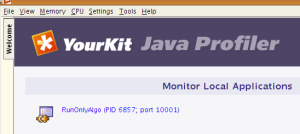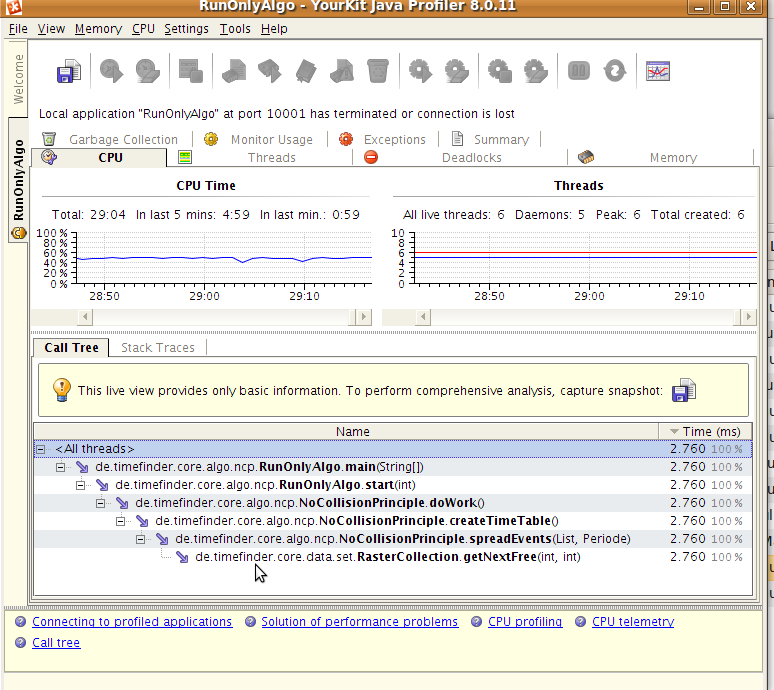I couldn’t find the correct maven deps for db4o if you use transparent activation … so here you are:
<dependencies>
<dependency>
<groupId>com.db4o</groupId>
<artifactId>db4o-full-java5</artifactId>
<version>${db4o.version}</version>
</dependency>
<dependency>
<groupId>com.db4o</groupId>
<artifactId>db4o-tools-java5</artifactId>
<version>${db4o.version}</version>
<scope>compile</scope>
</dependency>
<dependency>
<groupId>com.db4o</groupId>
<artifactId>db4o-taj-java5</artifactId>
<version>${db4o.version}</version>
<scope>compile</scope>
</dependency>
<dependency>
<groupId>com.db4o</groupId>
<artifactId>db4o-instrumentation-java5</artifactId>
<version>${db4o.version}</version>
<scope>compile</scope>
</dependency>
</dependencies>
<repositories>
<repository>
<id>db4o</id>
<name>Db4o</name>
<url>https://source.db4o.com/maven/</url>
</repository>
</repositories>
To use TA while build time you need the following snippet in your pom.xml:
<plugin>
<artifactId>maven-antrun-plugin</artifactId>
<version>1.3</version>
<dependencies>
<!-- for the regexp -->
<dependency>
<groupId>org.apache.ant</groupId>
<artifactId>ant-nodeps</artifactId>
<version>1.7.1</version>
</dependency>
<dependency>
<groupId>org.slf4j</groupId>
<artifactId>slf4j-log4j12</artifactId>
<version>${slf4j.version}</version>
</dependency>
</dependencies>
<executions>
<execution>
<phase>compile</phase>
<configuration>
<tasks>
<!-- Setup the path -->
<!-- use maven.compile.classpath instead db4o.enhance.path -->
<!-- Define enhancement tasks -->
<typedef resource="instrumentation-def.properties"
classpathref="maven.compile.classpath"
loaderref="db4o.enhance.loader" />
<!-- Enhance classes which include the @Db4oPersistent annotation -->
<!--
<typedef name="annotation-filter"
classname="tacustom.AnnotationClassFilter"
classpathref="maven.compile.classpath"
loaderref="db4o.enhance.loader" /> -->
<typedef name="native-query"
classname="com.db4o.nativequery.main.NQAntClassEditFactory"
classpathref="maven.compile.classpath"
loaderref="db4o.enhance.loader" />
<!-- Instrumentation -->
<db4o-instrument classTargetDir="target/classes">
<classpath refid="maven.compile.classpath" />
<sources dir="target/classes">
<include name="**/*.class" />
</sources>
<!-- <jars refid="runtime.fileset"/> -->
<!-- Optimise Native Queries -->
<native-query-step />
<transparent-activation-step>
<!-- <annotation-filter /> -->
<regexp pattern="^de\.timefinder\.data" />
<!-- <regexp pattern="^enhancement\.model\." /> -->
</transparent-activation-step>
</db4o-instrument>
</tasks>
</configuration>
<goals>
<goal>run</goal>
</goals>
</execution>
</executions>
</plugin>
And you will need to configure db4o ala
config.add(new TransparentActivationSupport());
// configure db4o to use instrumenting classloader
config.reflectWith(new JdkReflector(Db4oHelper.class.getClassLoader()));
config.diagnostic().addListener(new DiagnosticListener() {
@Override
public void onDiagnostic(Diagnostic dgnstc) {
System.out.println(dgnstc.toString());
}
});
Thanks to ptrthomas! … without his nice explanation I woudn’t got it working.
<plugin>
<artifactId>maven-antrun-plugin</artifactId>
<version>1.3</version>
<dependencies>
<!– for the regexp –>
<dependency>
<groupId>org.apache.ant</groupId>
<artifactId>ant-nodeps</artifactId>
<version>1.7.1</version>
</dependency>
</dependencies>
<executions>
<execution>
<phase>compile</phase>
<configuration>
<tasks>
<!–
http://ptrthomas.wordpress.com/2009/03/08/why-you-should-use-the-maven-ant-tasks-instead-of-maven-or-ivy/ –>
<!–<echo>NOW</echo>–>
<!– TODO get jar –>
<!–
<typedef resource=”org/apache/maven/artifact/ant/antlib.xml” uri=”urn:maven-artifact-ant”
classpath=”lib/maven-ant-tasks.jar”/>
<condition property=”maven.repo.local” value=”${maven.repo.local}” else=”${user.home}/.m2/repository”>
<isset property=”maven.repo.local”/>
</condition>
<artifact:localRepository id=”local.repository” path=”${maven.repo.local}”/>
<artifact:pom file=”pom.xml” id=”maven.project”/>
<artifact:dependencies pathId=”compile.classpath” filesetId=”compile.fileset” useScope=”compile”>
<pom refid=”maven.project”/>
<localRepository refid=”local.repository”/>
</artifact:dependencies>
<artifact:dependencies pathId=”runtime.classpath” filesetId=”runtime.fileset” useScope=”runtime”>
<pom refid=”maven.project”/>
<localRepository refid=”local.repository”/>
</artifact:dependencies>
–>
<!– Setup the path –>
<!– use maven.compile.classpath instead db4o.enhance.path –>
<!– Define enhancement tasks –>
<typedef resource=”instrumentation-def.properties”
classpathref=”maven.compile.classpath”
loaderref=”db4o.enhance.loader” />
<!– Enhance classes which include the @Db4oPersistent annotation –>
<!–
<typedef name=”annotation-filter”
classname=”tacustom.AnnotationClassFilter”
classpathref=”maven.compile.classpath”
loaderref=”db4o.enhance.loader” /> –>
<typedef name=”native-query”
classname=”com.db4o.nativequery.main.NQAntClassEditFactory”
classpathref=”maven.compile.classpath”
loaderref=”db4o.enhance.loader” />
<!– Instrumentation –>
<db4o-instrument classTargetDir=”target/classes” jarTargetDir=”target/”>
<classpath refid=”maven.compile.classpath” />
<sources dir=”src/main/java”>
<include name=”**/*.class” />
</sources>
<!–
TODO runtime.fileset
–>
<!– <jars refid=”runtime.fileset”/> –>
<!– Optimise Native Queries –>
<native-query-step />
<transparent-activation-step>
<!– <annotation-filter /> –>
<regexp pattern=”^de\.timefinder\.jetwick\.data” />
<!– <regexp pattern=”^enhancement\.model\.” /> –>
</transparent-activation-step>
</db4o-instrument>
</tasks>
</configuration>
<goals>
<goal>run</goal>
</goals>
</execution>
</executions>
<plugin>
<artifactId>maven-antrun-plugin</artifactId>
<version>1.3</version>
<dependencies>
<!– for the regexp –>
<dependency>
<groupId>org.apache.ant</groupId>
<artifactId>ant-nodeps</artifactId>
<version>1.7.1</version>
</dependency>
</dependencies>
<executions>
<execution>
<phase>compile</phase>
<configuration>
<tasks>
<!– http://ptrthomas.wordpress.com/2009/03/08/why-you-should-use-the-maven-ant-tasks-instead-of-maven-or-ivy/ –>
<!–<echo>NOW</echo>–>
<!– TODO get jar –>
<!–
<typedef resource=”org/apache/maven/artifact/ant/antlib.xml” uri=”urn:maven-artifact-ant”
classpath=”lib/maven-ant-tasks.jar”/>
<condition property=”maven.repo.local” value=”${maven.repo.local}” else=”${user.home}/.m2/repository”>
<isset property=”maven.repo.local”/>
</condition>
<artifact:localRepository id=”local.repository” path=”${maven.repo.local}”/>
<artifact:pom file=”pom.xml” id=”maven.project”/>
<artifact:dependencies pathId=”compile.classpath” filesetId=”compile.fileset” useScope=”compile”>
<pom refid=”maven.project”/>
<localRepository refid=”local.repository”/>
</artifact:dependencies>
<artifact:dependencies pathId=”runtime.classpath” filesetId=”runtime.fileset” useScope=”runtime”>
<pom refid=”maven.project”/>
<localRepository refid=”local.repository”/>
</artifact:dependencies>
–>
<!– Setup the path –>
<!– use maven.compile.classpath instead db4o.enhance.path –>
<!– Define enhancement tasks –>
<typedef resource=”instrumentation-def.properties”
classpathref=”maven.compile.classpath”
loaderref=”db4o.enhance.loader” />
<!– Enhance classes which include the @Db4oPersistent annotation –>
<!–
<typedef name=”annotation-filter”
classname=”tacustom.AnnotationClassFilter”
classpathref=”maven.compile.classpath”
loaderref=”db4o.enhance.loader” /> –>
<typedef name=”native-query”
classname=”com.db4o.nativequery.main.NQAntClassEditFactory”
classpathref=”maven.compile.classpath”
loaderref=”db4o.enhance.loader” />
<!– Instrumentation –>
<db4o-instrument classTargetDir=”target/classes” jarTargetDir=”target/”>
<classpath refid=”maven.compile.classpath” />
<sources dir=”src/main/java”>
<include name=”**/*.class” />
</sources>
<!–
TODO runtime.fileset
–>
<!– <jars refid=”runtime.fileset”/> –>
<!– Optimise Native Queries –>
<native-query-step />
<transparent-activation-step>
<!– <annotation-filter /> –>
<regexp pattern=”^de\.timefinder\.jetwick\.data” />
<!– <regexp pattern=”^enhancement\.model\.” /> –>
</transparent-activation-step>
</db4o-instrument>
</tasks>
</configuration>
<goals>
<goal>run</goal>
</goals>
</execution>
</executions>
</plugin> </plugin>





